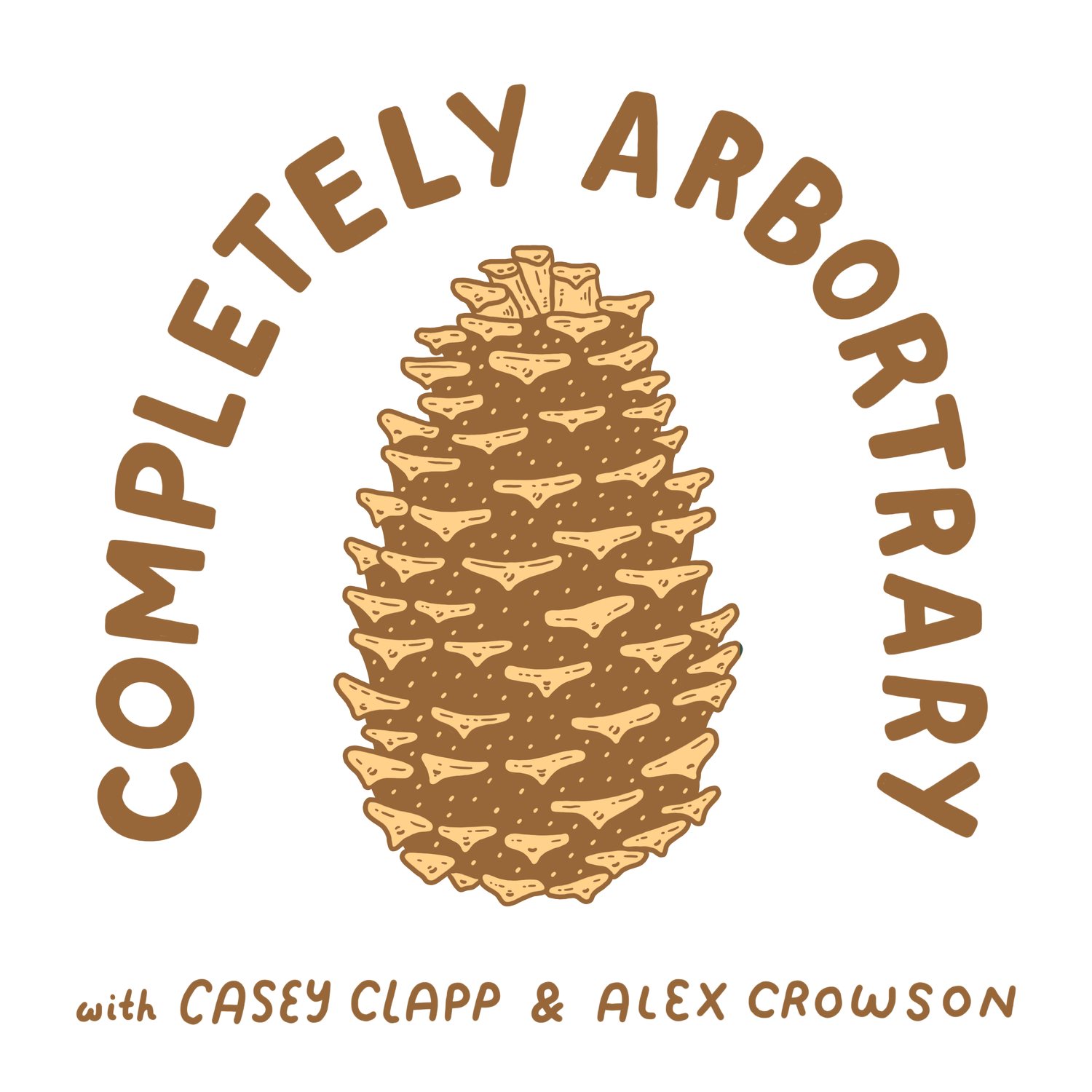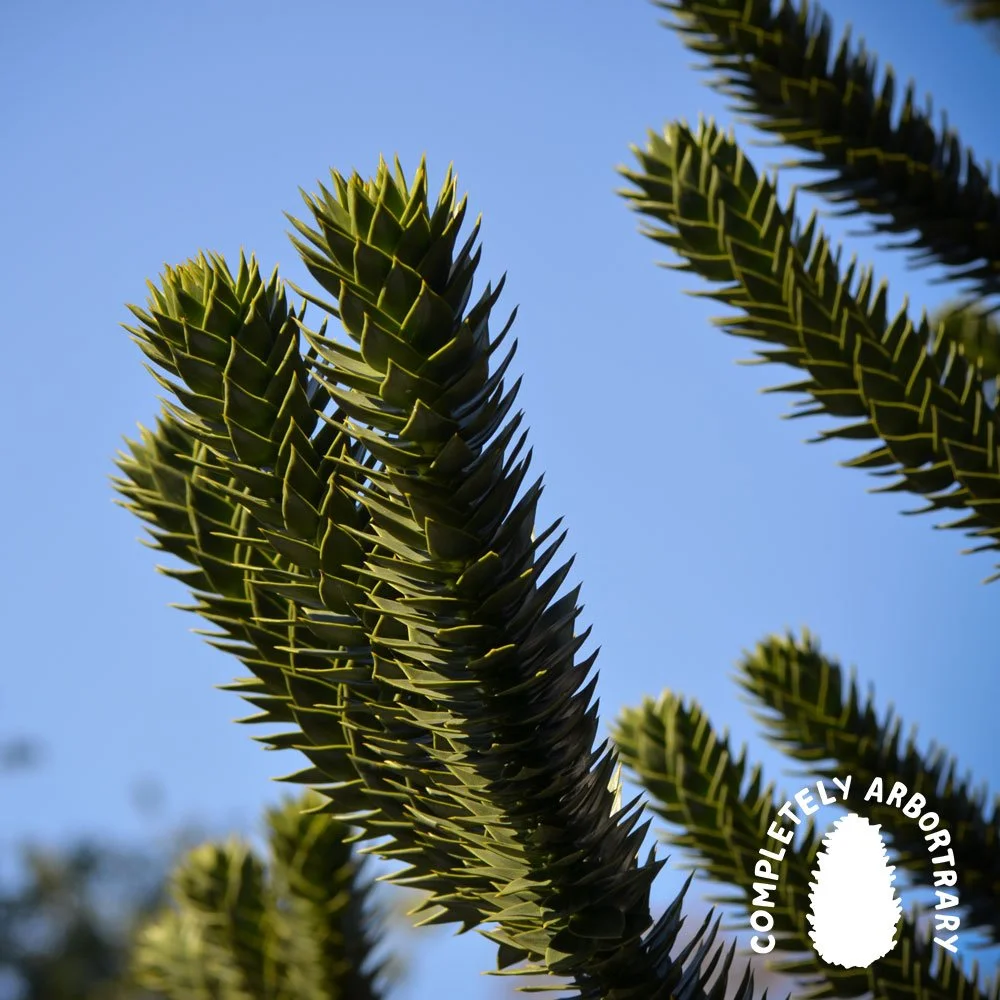PEHUÉN (MONKEY PUZZLE)
The first episode of the Spring 2021 Collection: a Global Traverse. This week we travel to the southern hemisphere to dive into what makes the monkey puzzle tree (Araucaria araucana) so dang interesting. From ancient roots to endemic speciation, we chat about this relic from another time. Then we play a new game. Welcome back!
Monkey Puzzle
(Araucaria araucana)
Some trees are ancient, and somehow you can tell simply by looking at them. Sometimes it’s their aged appearance: the wrinkles in their stem, the thickness of their bark, the sheer size of their trunk and limbs. Just like the rest of us, old trees have problems, some bits decaying over here, a broken limb or two over there, the visible scars of the past betraying hidden ailments just below the bark. One way or another, you can just tell that a tree has seen some years.
But you can also tell when a tree is ancient in that it’s from a different time. Like seeing a rugged warrior from ancient Rome or Persia or China transported through time to the streets of modern Venice, Tehran, or Beijing: it’s pretty clear they aren’t from this era. But, as if to show that time travel is real, a few trees from eons long past can still be found today, and with a glance you can tell that they grew up in a different time. The pehuén is just such a tree.
Most people in English-speaking countries know this tree as the monkey puzzle (Araucaria araucana), but where it’s native it’s known as pehuén, and the people that live within these forests, who use the seeds an important source of food, are known as the Pehuenche. Pehuén are massive forest trees that grow in the high southern Andes in southern Chile and southwestern Argentina. Growing up to 130 ft (40 m), they develop massive single stems that support a mop top canopy with dark green leaves. These leaves are thick, sharply pointed, triangularly shaped and stay on their branches for up to 15 years. Seeing the branches cascade out and down from the tops of the trees, you can’t help but be reminded of the scales and sharply armored tails of the stegosaurus.
Today the range of pehuén is considerably smaller than it once was, and the complex history of this tree and its closest relatives mirrors that of the pine family, Pinaceae, in the northern hemisphere. Fossil species of Araucaria-like trees have been found in North America, but all the living species exist today in the southern hemisphere.
The araucaria family, Araucariaceae, appeared in the late Triassic, some 220 million years ago, and hitched a ride on the southern breakaway section of the supercontinent Pangea called Gondwana. Over time, Gondwana broke apart into what we know today as South America, Africa, Australia, and Antarctica, and as it did, it took different populations of araucaria species with it. These marooned trees continued to adapt and change, and through millions of years and tectonic shifts in their geography, they all became unique species in their own right.
Being from such an ancient lineage of trees, pehuén have two unique components of their history that can still be seen today. The first is that they developed along with some of the earliest conifers and as such have traits that are similar to these ancestors, like the shedding of whole branches instead of individual leaves, and cones that fall apart at maturity. They also develop rounded, often irregular crowns that are quite unlike the pyramidal form of the conifers known in the Northern Hemisphere, like spruce, fir, and pine, all of which developed much later.
The second unique trait is that they developed with actual dinosaurs (like the stegosaurus) which were roaming around snacking on juicy conifer leaves. These predation pressures are likely what led to the intensely armored leaves and branches we see today, though the herbivores who initially did the munching are long gone. Another adaptation from the past that seems so strikingly out of place today.
As ancient trees go, the pehuén seems to define the style: it is a medieval castle among modern glass-plated skyscrapers. A tree that survives today despite the odds of 220 million years changing fashions is one that certainly has something going for it. It’s the sort of tree that if it said, “Back in my day,” we would all be hanging off every word.
Completely Arbortrary is produced and hosted by Casey Clapp and Alex Crowson
Support the pod and become a Treemium Member
Follow along on Instagram
Find Arbortrary merch on our store
Cover art by Jillian Barthold
Music by Aves and The Mini-Vandals
Episode cover photo by Norbert Nagel

